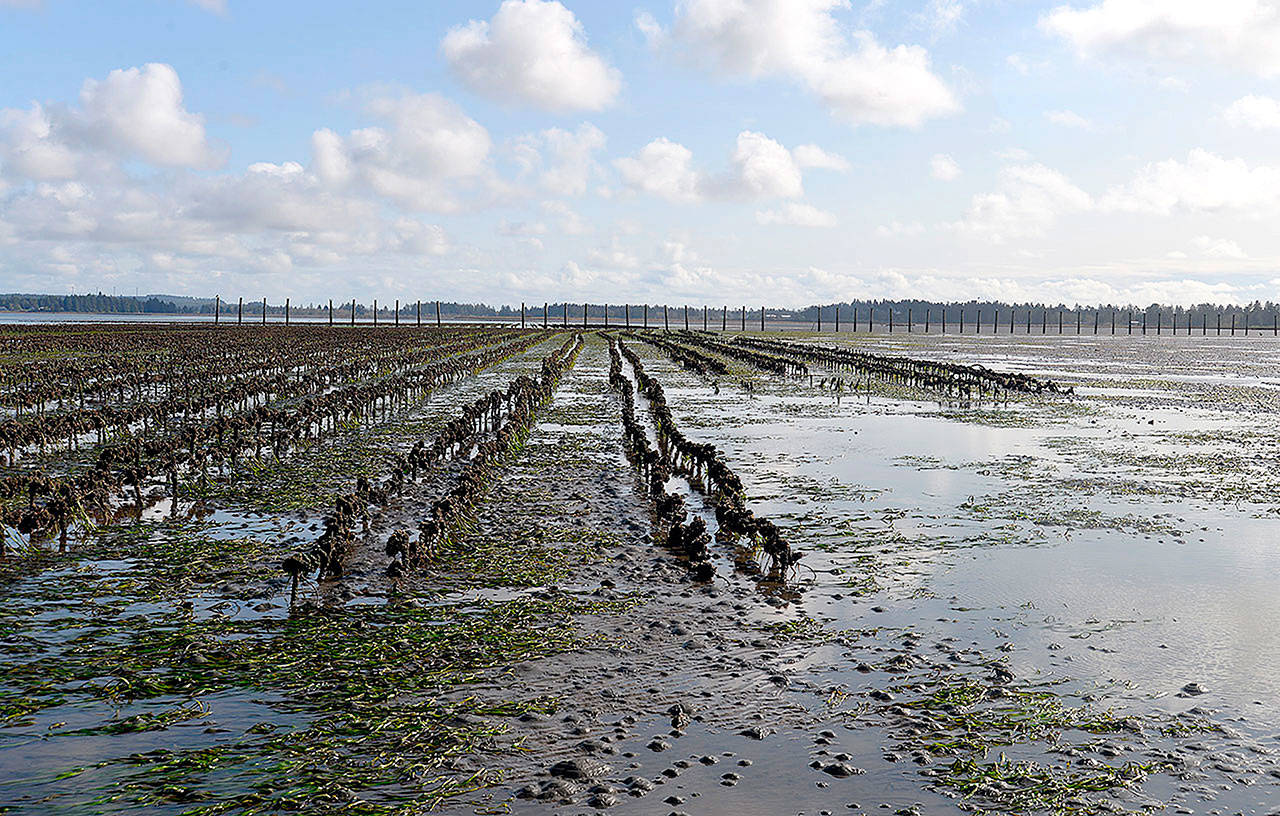Hal Bernton
The Seattle Times
A federal judge has thrown out a federal permit for the state’s shellfish industry, saying the Army Corps of Engineers failed to give enough environmental scrutiny to aquaculture farms.
U.S. District Judge Robert Lasnik found federal regulators did not comply with the Clean Water and National Environmental Policy acts in granting a general permit in 2017 that authorizes most of the state’s shellfish operations.
What happens next is unclear.
Lasnik, in a ruling released Friday, wrote that he has the power to vacate the permit outright. But to avoid the disruption of the industry, he left open the option of continuing current operations while the Army Corps “performs an adequate analysis to correct its unlawful actions.”
Washington state is the nation’s top producer of farmed shellfish, with oysters, clams, geoducks and other mussels from hundreds of operations generating annual revenue of nearly $150 million, according to a 2013 industry study.
The permit allowed for an estimated 72,300 acres of Washington tidelands to be used for shellfish operations, compared to the 56,000 acres permitted in 2012, according to statistics noted by the judge.
After reviewing the court filings, Lasnik found “insufficient evidence in the record” to support the Army Corps’ conclusion that the permit would result in minimal effects on the environment.
In recent years, shellfish growers have come under increased scrutiny, in part because of some oyster growers’ use of the insecticide imidacloprid to kill burrowing shrimp. The practice was opposed by some Seattle chefs, the U.S. Fish and Wildlife Service and the National Oceanic and Atmospheric Administration, and last year the state Department of Ecology rejected a proposal to use the spray.
Lasnik’s ruling results from a federal lawsuit brought by shellfish industry critics, citing the risk of marine debris from plastics used in tubing and netting, and the effects of herbicide sprayed by some operations. They also note the cumulative harmful effects of aquatic farming on state tidelands from practices such as gravel-spreading and mechanical harvests.
“We are hoping that the federal government actually critically looks at how much of the conversion of natural tideland is really acceptable when we are trying to preserve public waters. We argue that this has gone past the tipping point,” said Amy van Saun, a senior attorney for the Center for Food Safety, one of the plaintiffs in the lawsuit.
She notes the tidelands are for salmon as well as shorebirds, Dungeness crab and other marine life.
A spokeswoman for the Army Corps of Engineers said in a written statement the agency was evaluating the court ruling, and will work with the Justice Department to file a motion by Oct. 30 about how to comply with the decision.
The five-year Army Corps permit was issued in January 2017 at the tail end of the Obama administration. It “provided a measure of regulatory stability that has been valuable for these businesses,” said a statement released by the Pacific Coast Shellfish Growers Association.
The shellfish growers, in their statement, said the Army Corps already consults with the National Marine Fisheries Service and the U.S. Fish and Wildlife Service. These talks have resulted in more than 30 conditions they must meet in their operations, including measures to deal with plastic debris and to protect native eelgrass and fish.
“Growers firmly believe these rigorous conditions, combined with various other state and local requirements…fully protect Washington’s marine environment.”
One option for the permitting process could be to beef up the environmental reviews of the general permit. Or the corps could start issuing individual permits, which would be a more time-consuming process.
However it moves forward, Billy Plauche, an attorney representing the shellfish industry, hopes the judge will allow all the industry farms to continue to operate.
“Our request will be to ensure that there is some continuity of coverage for ongoing activity,” Plauche said.
The plaintiffs say they want this to be more than a reshuffling of justifications for the current permitting process. One proposal could be for companies to finish harvesting shellfish now being cultivated, but halting new cultivation until the permitting process has been revised, according to van Saun.
“One of the big missing pieces is what’s the cumulative impact of all this on the ecosystem,” van Saun said.


